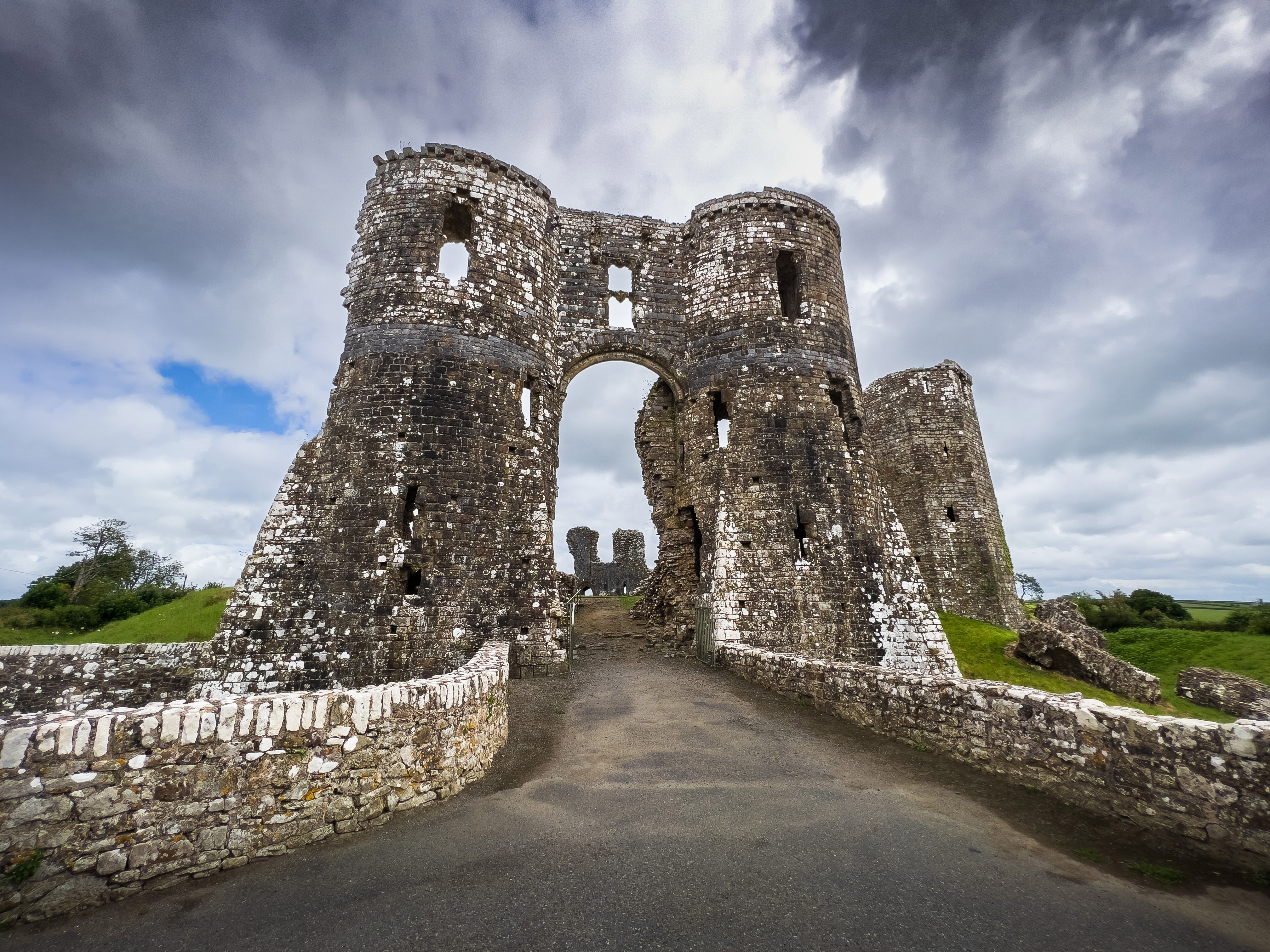The best Canon portrait lenses: fast primes for your EOS camera
The best Canon portrait lenses enable you to take pixel-perfect people pictures with your EOS camera
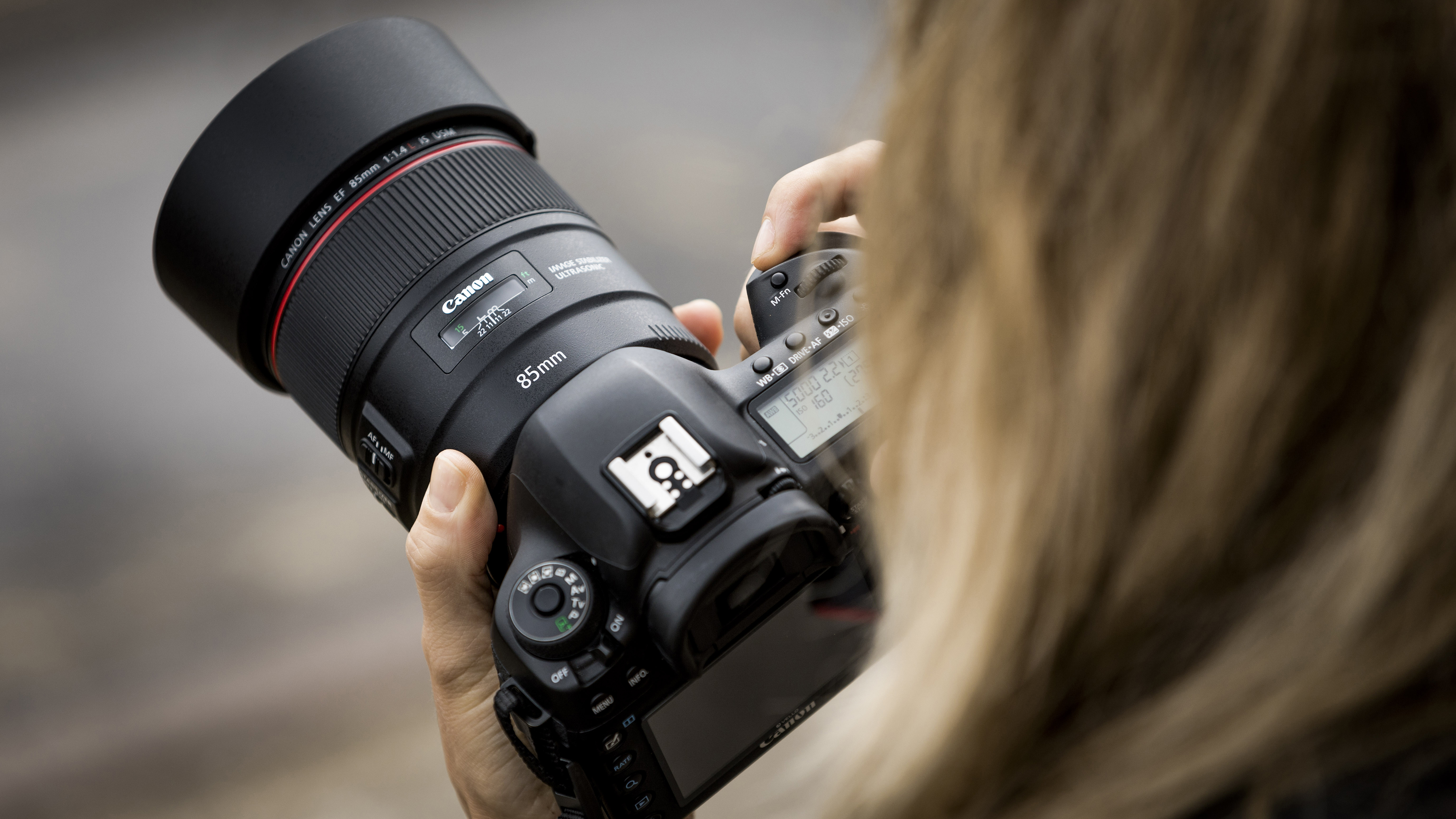
Welcome to our guide to the best Canon portrait lenses. Whether you're using a Canon DSLR, an EOS M mirrorless camera or one of the latest EOS R mirrorless cameras, these are the fast primes that will get you perfect portraits, every time.
As Digital Camera World's go-to lens reviewer, I've covered lenses for all of Canon's systems, and this list represents the best of the best, in my view. One thing to note, however, is that I've not just picked the most expensive professional lenses – there are multiple instances where I think a cheaper lens is a smarter buy, and I've made sure to include budget-friendly options.
See the bottom of this page for more detail on my selection criteria, and for more options in the system, you can check out our team's guides to the best Canon DSLR lenses and the best Canon mirrorless lenses for RF-mount. But for now, let's get started with the best Canon portrait lenses!

Portraits have been my bread and butter as both an EOS and EOS R shooter for many years. As Digital Camera World's principal lens reviewer, I've tested more primes and zooms than most people have had hot dinners – and the lenses on this list are my top recommendations.
The quick list
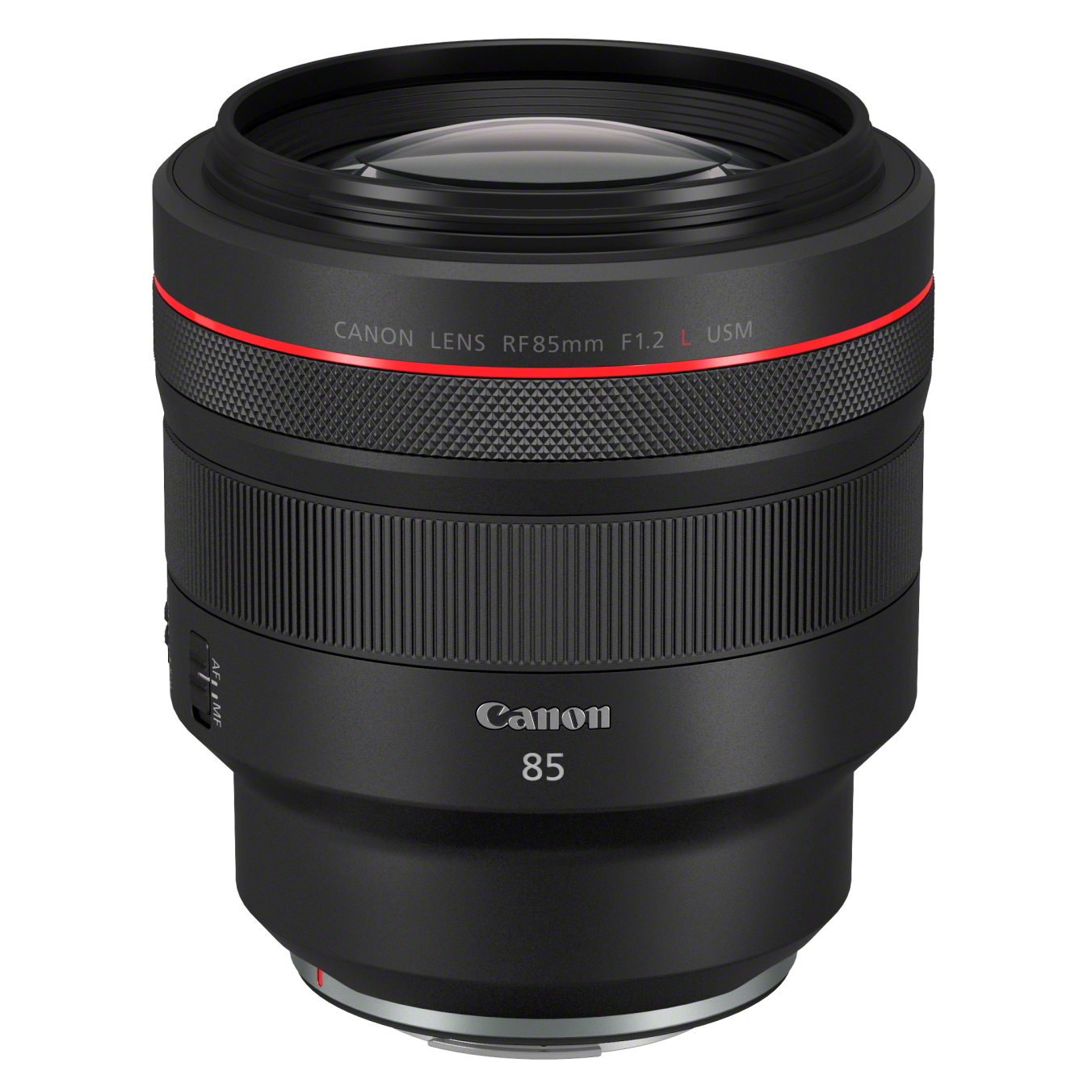
Best Canon RF portrait lens
My top pick for portraits on EOS R, this lens is tack-sharp, bokehlicious and weather-sealed. It's an all-around outstanding lens for shooting headshots.
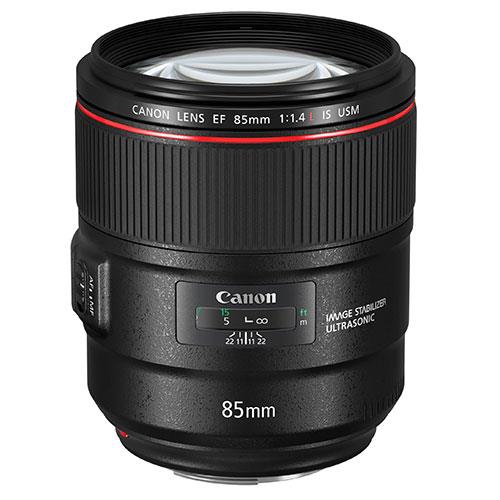
Best Canon EF portrait lens
For Canon DSLR shooters, this lens is a fabulous choice. I prefer it to the f/1.2L USM II as it's lighter, faster and adds weather seals into the mix.
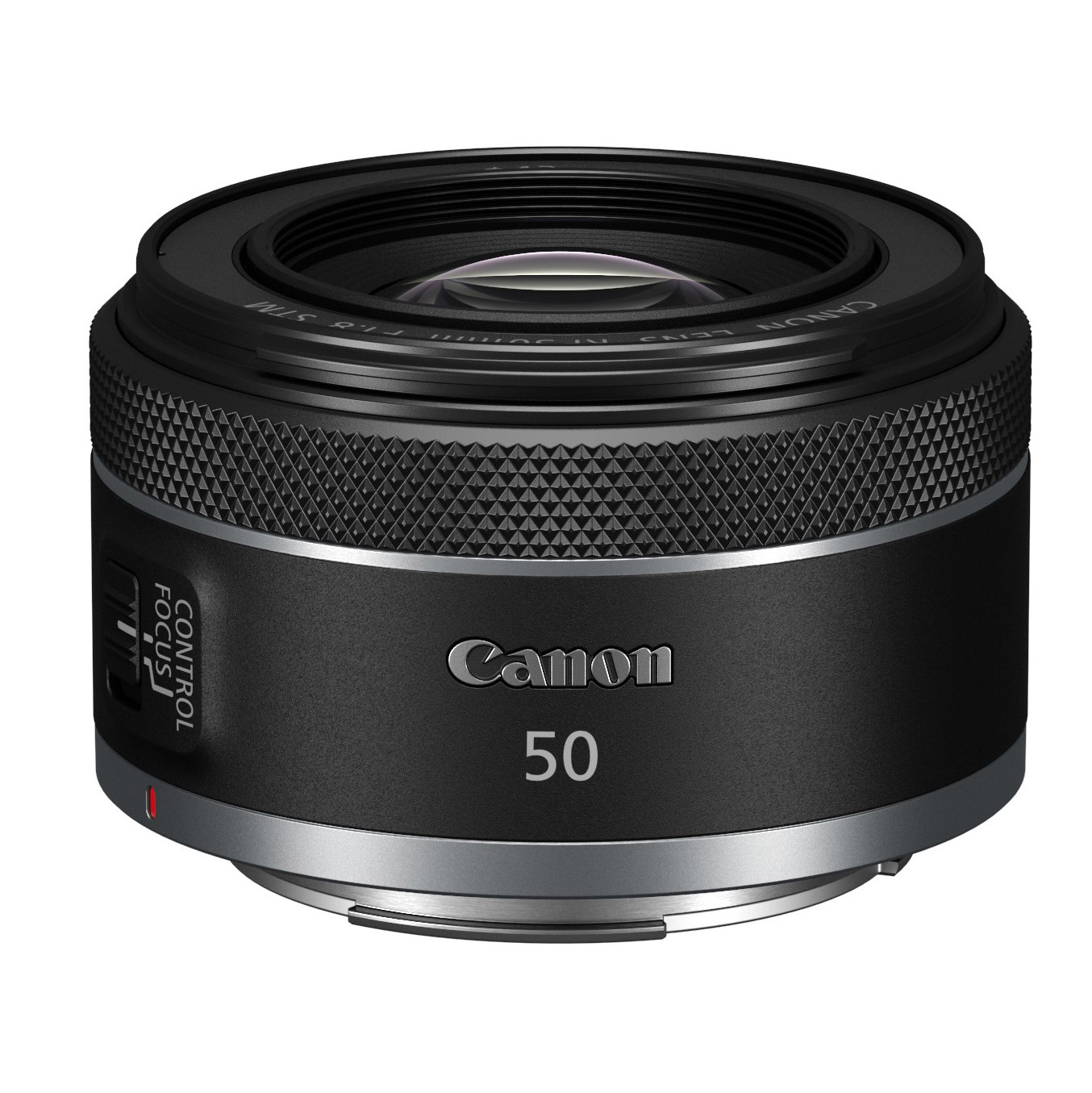
Best Canon APS-C portrait lens
This nifty-fifty delivers a portrait-friendly 80mm on an APS-C Canon mirrorless camera (DSLR users should try the EF version). It's light, cheap, and delivers the goods.
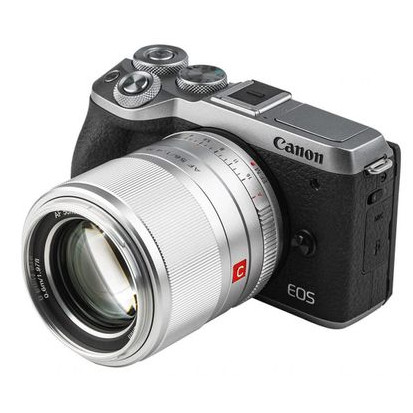
Best Canon EF-M portrait lens
More interesting than anything Canon itself has produced for EF-M, this third-party lens produces excellent image quality and dreamy bokeh.
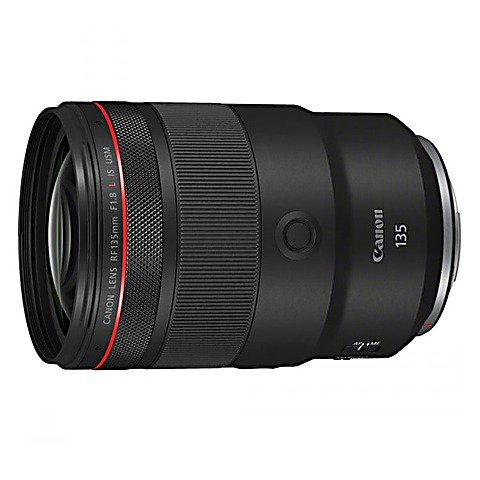
Best for headshots
With a tighter field of view, this long-awaited update to a classic DSLR lens is a brilliant option for close head-and-shoulders portraiture, as long as you can afford it.
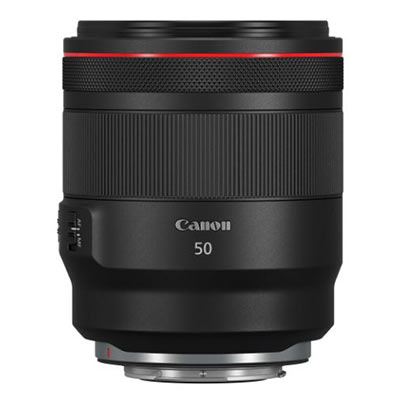
Best environmental portrait lens
With a wider 50mm perspective, this dynamic standard prime is perfect for portraits with a little more context to the subject. Its unique look is close to medium format.
Load the next 6 products ↴
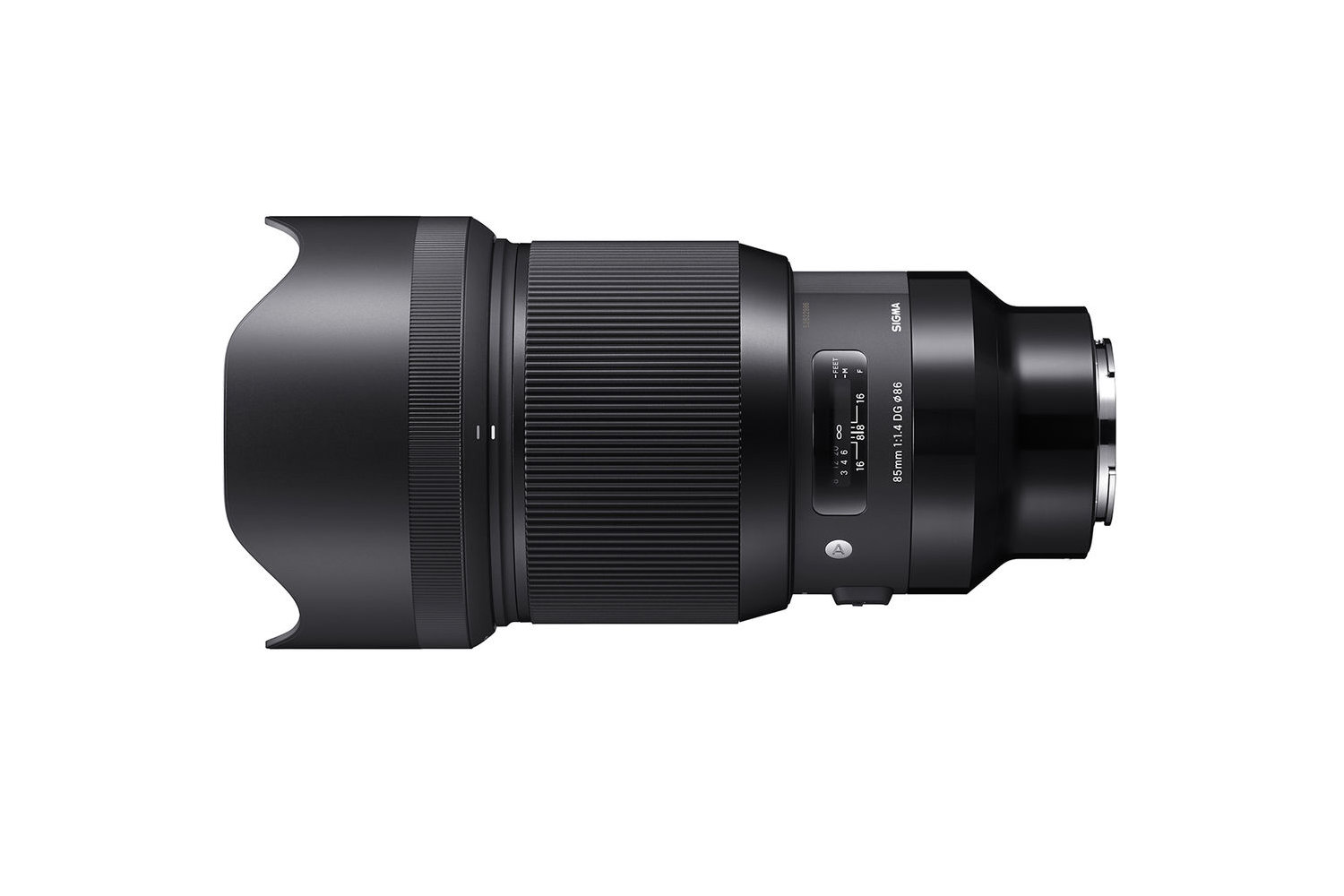
Best third-party EF portrait lens
While this lens is not what you'd call lightweight, clocking in at 1,130g, its performance is beyond reproach. Focusing is fast – and I'm happy to see weather-seals.
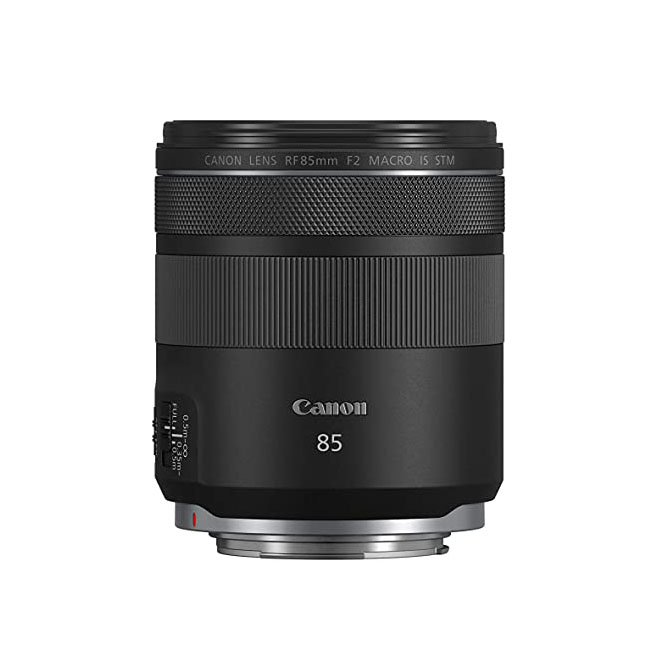
Best macro portrait lens
Sure – f/1.8 would have been nice. But this capable macro prime is still great for portraits, and it's cheaper than the faster primes for RF.
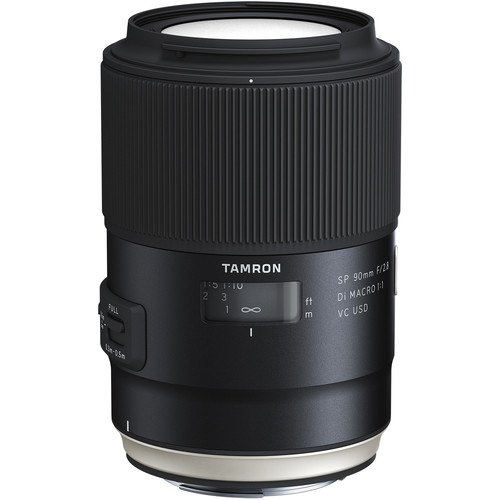
Best used portrait lens
If you're looking on the second-hand market, this macro prime for Canon EF-mount can be nabbed for a tempting price. Its centre-sharpness impressed in our tests.
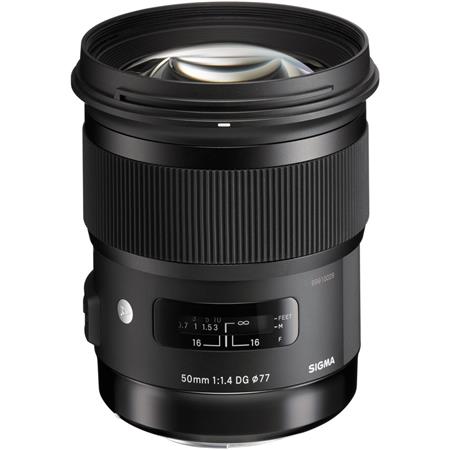
Best fast-focusing portrait lens
Thanks to its ring-type ultrasonic system, this Sigma lens for Canon DSLRs acquires focus with lightning speed. Centre sharpness is also outstanding.
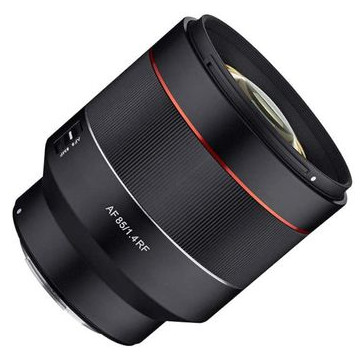
Best cheap RF portrait lens
Shooting on RF doesn't have to cost the earth. This Samyang-made lens is available for an excellent price, and unlike many Samyang lenses, it even has autofocus.
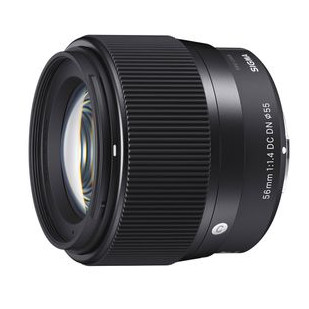
Best lightweight EF-M portrait lens
Another option for EF-M that's better than the Canon-made stuff, this Sigma portrait lens delivers brilliant quality in a lightweight body suited to travel.
The best Canon portrait lenses
Why you can trust Digital Camera World
Best Canon RF portrait lens
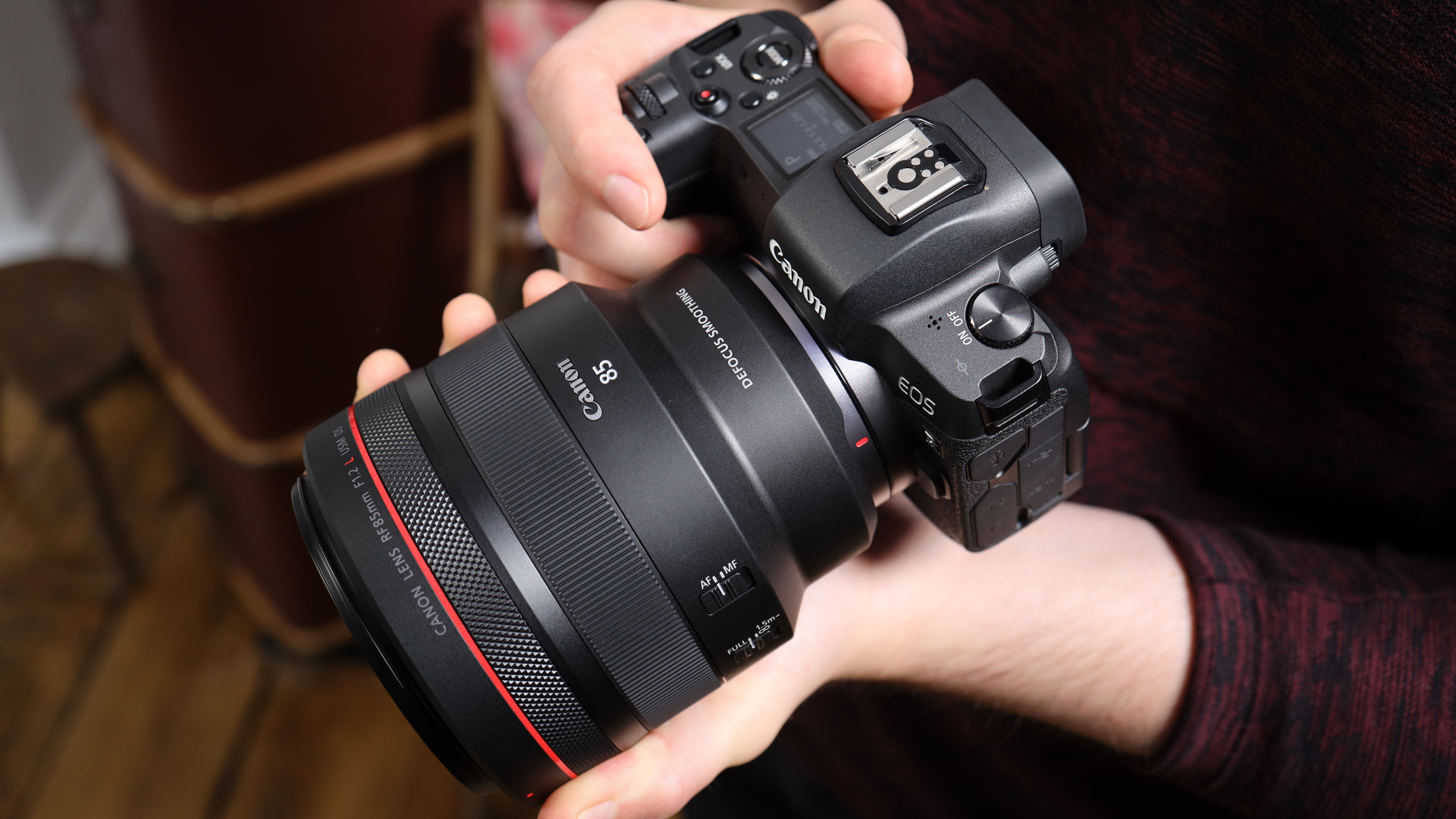
Specifications
Reasons to buy
Reasons to avoid
Canon’s RF 85mm f/1.2L USM is arguably the best portrait lens in the world right now. It combines premium aspherical and UD (Ultra-low Dispersion) and BR (Blue spectrum Refractive) optical elements with high-tech ASC (Air Sphere Coating) to deliver absolutely stunning image quality in all respects.
Unlike the EF 85mm f/1.2 lens for DSLRs, this RF-mount lens for EOS R-series cameras features weather seals and fluorine coatings on the front and rear elements. It also has a much faster autofocus system, although the electronically coupled manual focus ring is retained, which enables very fine and precise adjustments. Sharpness is stunning and bokeh is sublime and, as noted, this becomes an effective 136mm optic on an APS-C camera – making it ideal for those shooting on crop sensors.
For the most demanding portrait photographers, there’s an even pricier version of the lens: the Canon RF 85mm f/1.2L USM DS, which has an additional Defocus Smoothing coating. This further softens the edges of bokeh discs caused by defocused lights and bright spots for the creamiest bokeh you've ever seen! We'd still ultimately opt for the RF 85mm f/1.2L USM, as the loss of transmission in the DS version is a bit of a drawback.
Read our full Canon RF 85mm f/1.2L USM review
Best Canon EF portrait lens
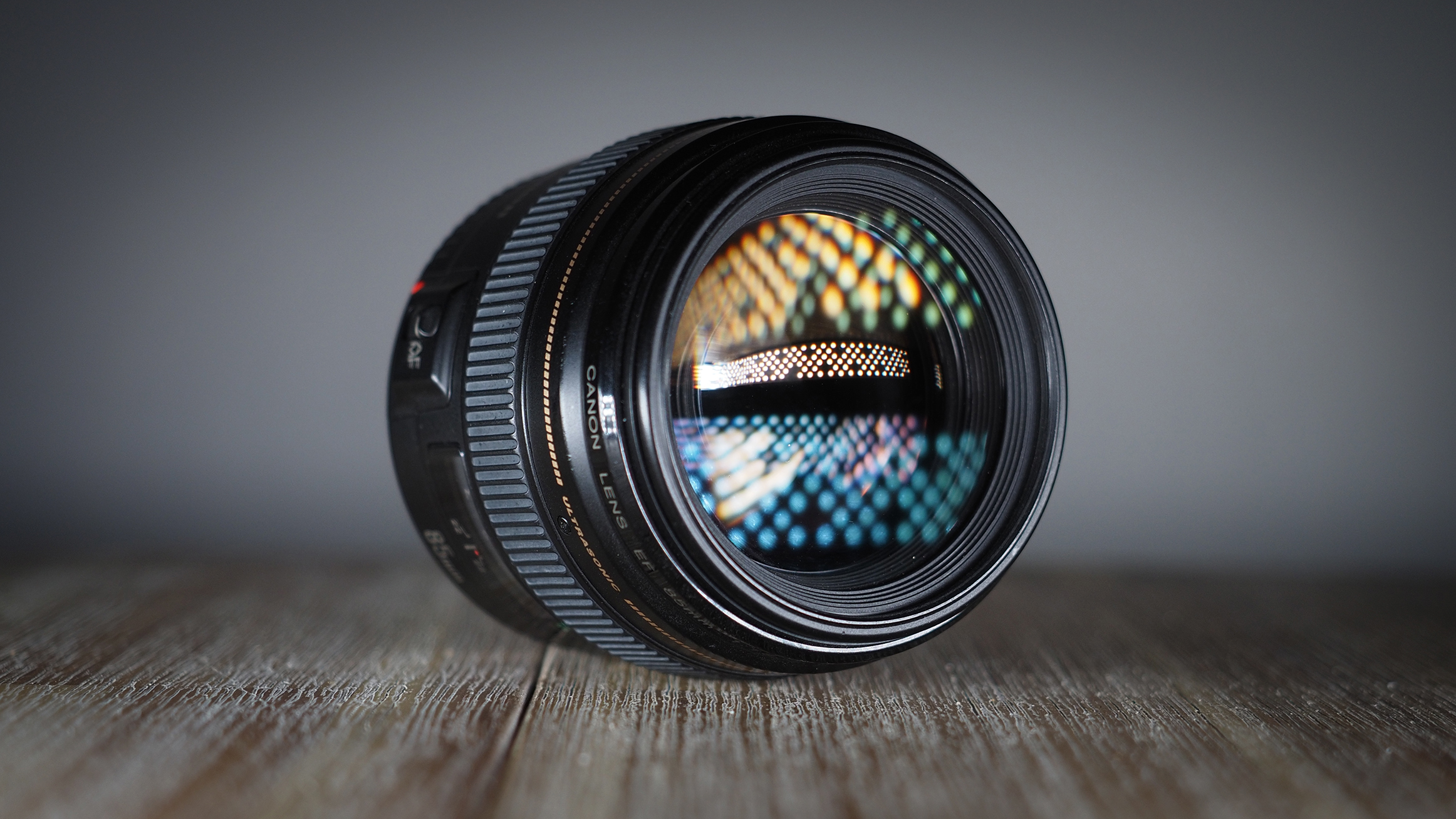
Specifications
Reasons to buy
Reasons to avoid
Canon’s EF 85mm f/1.2L USM II lens is often seen as the holy grail of portrait primes, with its super-fast aperture rating, but we actually prefer this f/1.4 lens. It’s smaller, lighter, has a much faster autofocus system and adds weather seals. Even more importantly, it adds a 4-stop image stabilizer which can be a massive help in getting consistently sharp handheld images under dull ambient lighting. These upgrades stack up particularly well for wedding portraiture.
Another bonus of this lens over the bigger f/1.2 is that it has nine diaphragm blades rather than eight, enabling a better-rounded aperture when stopping down a little. This avoids the problem of the f/1.2 lens producing noticeably octagonal bokeh discs from defocused pinpricks of light and bright spots.
See our full Canon EF 85mm f/1.4L IS USM review.
Best Canon portrait lens for APS-C
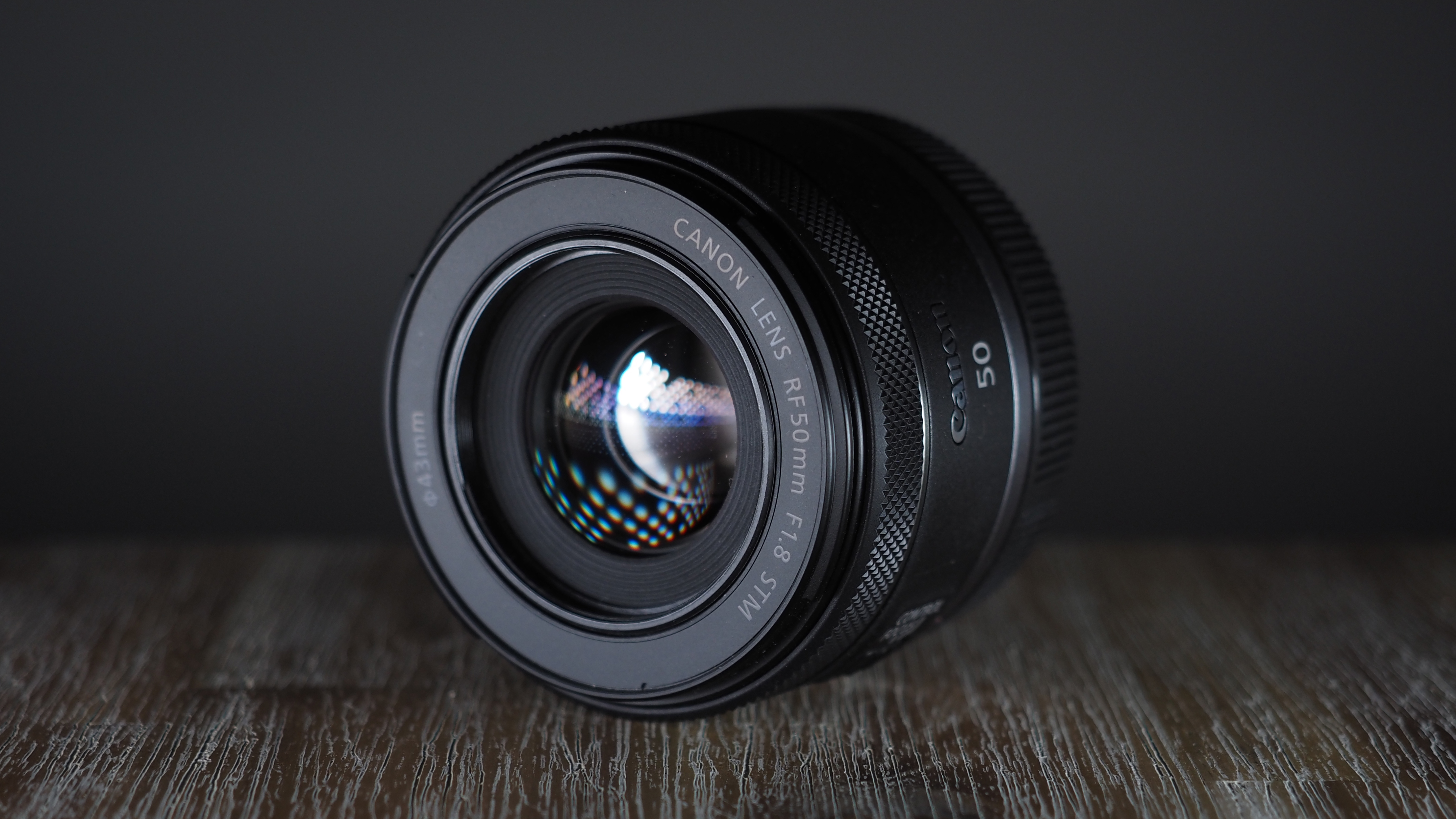
Specifications
Reasons to buy
Reasons to avoid
While this isn't nominally an RF-S lens, its lightweight build means it balances well on Canon's smaller APS-C cameras. And what's more, the crop factor of APS-C means that when this lens is mounted to a Canon camera with a smaller sensor, like the EOS R100 or the EOS R50, it produces an effective focal length of 80mm. This makes it a much better candidate for portraiture than any of the dedicated RF-S lenses, which are mostly zooms with fairly narrow maximum apertures.
This lens is a successor to the famous EF 50mm f/1.8 STM 'nifty fifty' – users of Canon APS-C DSLRs will want to consider that lens instead. However, this new version improves on its predecessor in pretty much every conceivable way, without adding any extra bulk. It delivers brilliantly punchy images right the way through its aperture range, providing excellent separation of subject and background. It's not quite in the same league as the RF 50mm f/1.2L (more on which below), but as we found in our testing, it can match the bigger lens for sharpness in certain situations – and for a tenth of the price!
See our full Canon RF 50mm f/1.8 STM review
Best Canon EF-M portrait lens
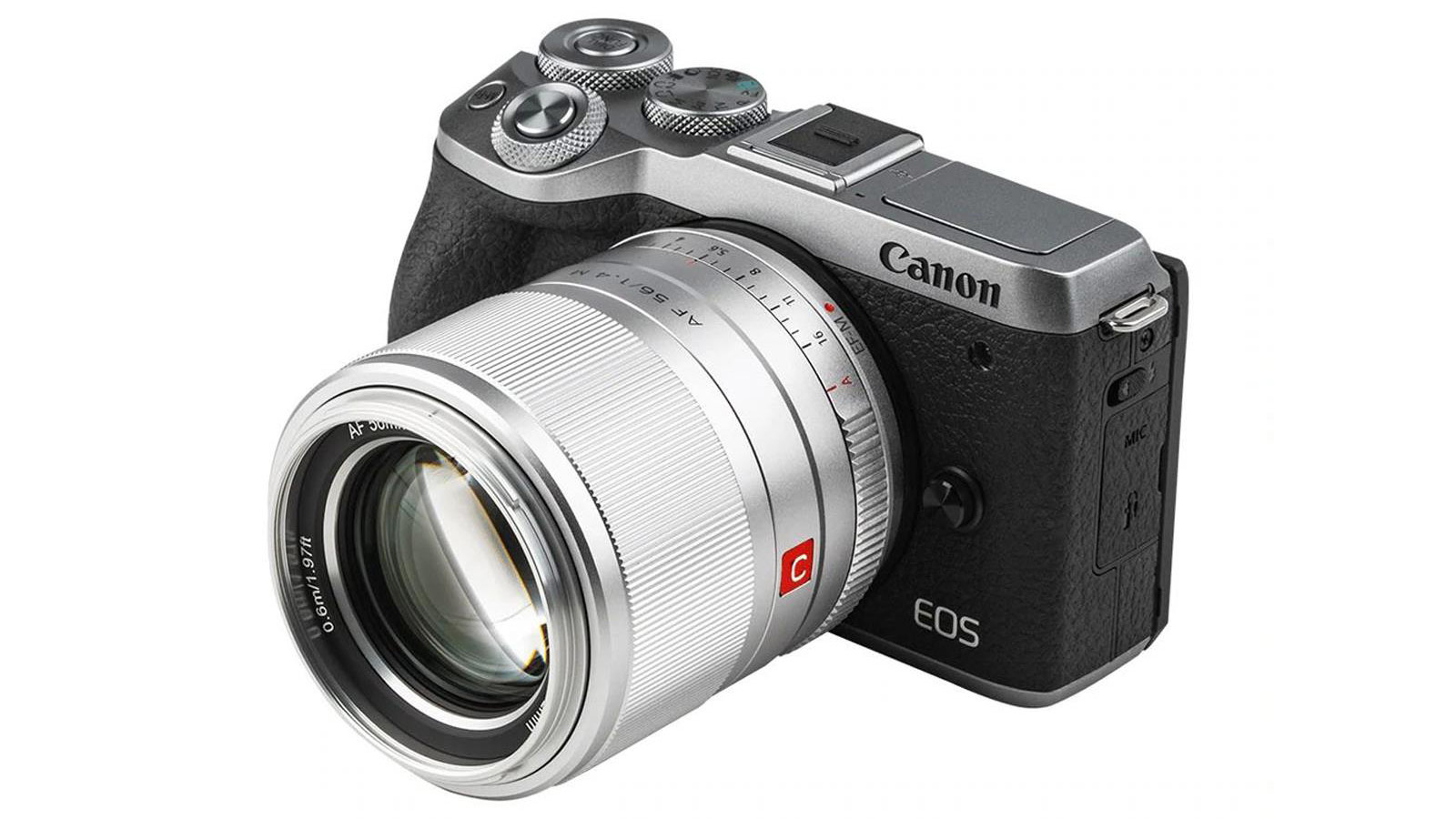
Specifications
Reasons to buy
Reasons to avoid
You may not be familiar with the Viltrox brand, but it has been coming out with some excellent fast primes for APS-C mirrorless cameras, including the somewhat neglected Canon EF-M mount. The Viltrox AF 56mm F1.4 is our pick for portraiture, as its focal length evens out to a headshot-friendly 90mm when mounted on an APS-C camera. As we discovered in our review, image quality from the Viltrox is generally very impressive, even when the lens is used wide open at f/1.4, and bokeh from the lens has a lovely dreamy quality to it.
At this price, there’s little to complain about with this lens – it’s heaps more interesting than anything Canon has produced for the EF-M mount. The only real downsides are that it’s not weather-sealed, and stills photographers may find it irritating that the aperture ring doesn't have a clickable option. However, the Micro USB port built into the mounting plate means you’ll be able to get firmware updates for years to come, suitably future-proofing the lens.
See our full Viltrox 56mm F1.4 AF review
Best lens for headshots
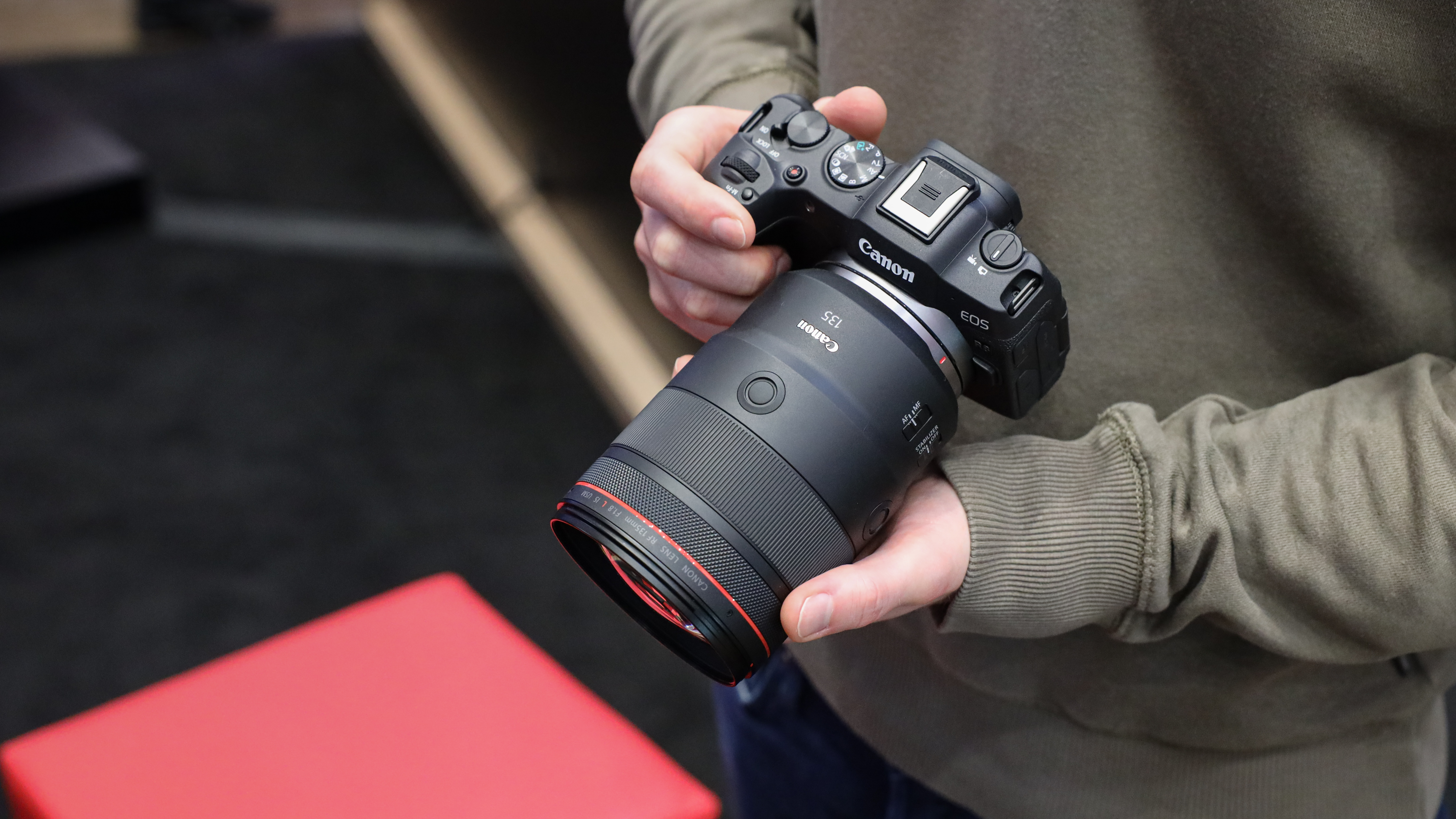
Specifications
Reasons to buy
Reasons to avoid
It took some 27 years for Canon to get around to releasing a successor to its hugely popular 135mm f/2 L USM EF lens – but it was certainly worth the wait. The RF 135mm f/1.8L IS USM lens is ultra-sharp and built to the exacting standards of Canon's premium L series. With a tighter field of view than the 85mm standard portrait lens, it's ideal for getting headshots and head-and-shoulders portraits, placing firm emphasis on the subject rather than their environment. It's also stabilised, with 5.5 stops of lens-based IS, which can be upgraded to 8 effective stops when used with compatible EOS R cameras.
Of course, given that this is an L-series lens, it's certainly not cheap. It's also a hefty customer – weighing in at almost a kilogram, it's certainly a lens that you'll be painfully aware of if you carry it around on your neck all day.
Read our Canon RF 135mm f/1.8L IS STM review
Best environmental portrait lens
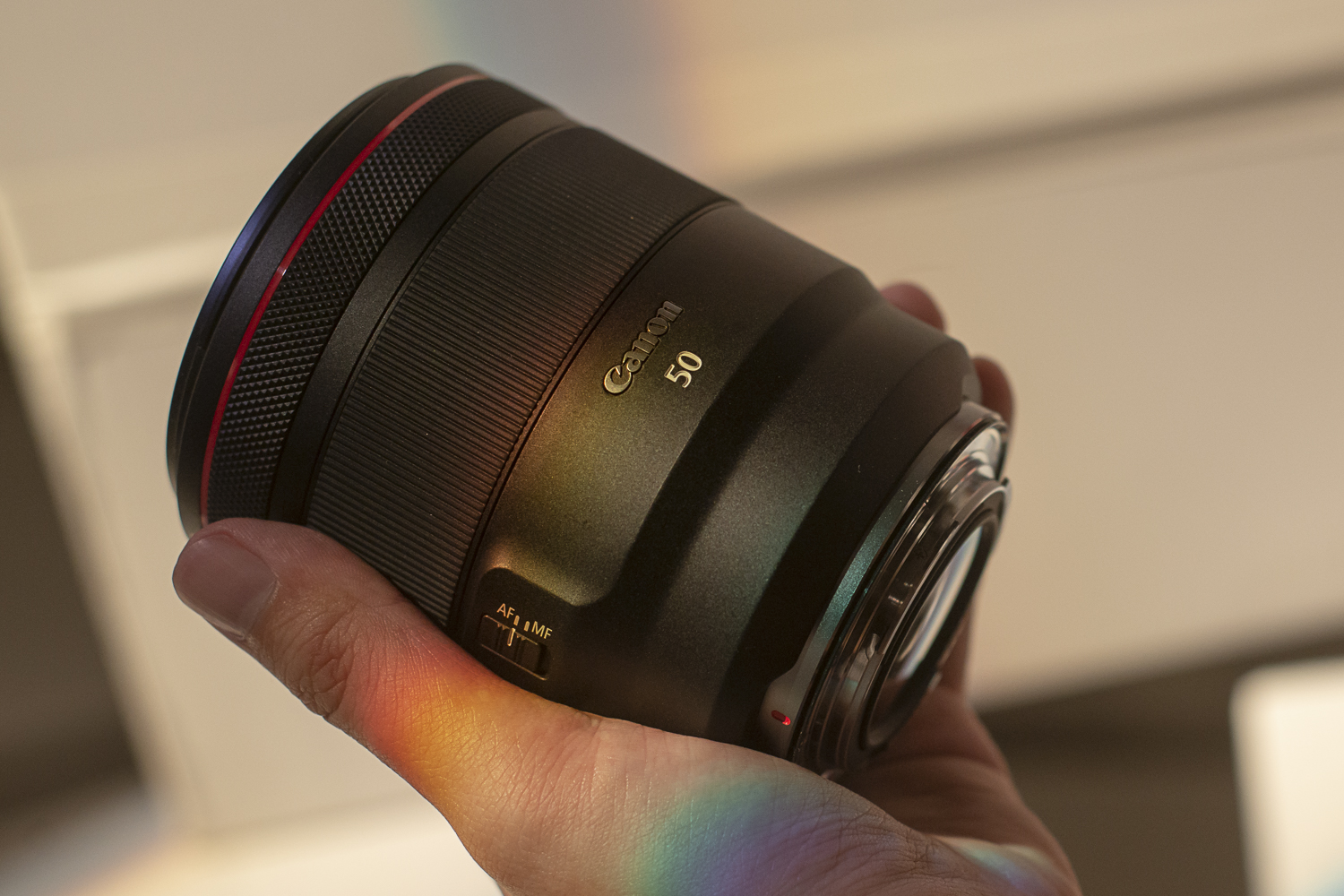
Specifications
Reasons to buy
Reasons to avoid
The legendary Canon 50mm legacy has been reborn for the RF mount. This lens in the EF mount was a go-to for all fashion and portrait photographers for over a decade who wanted a wider shot but without too much distortion. It provided a unique rendering not seen in any other Canon lens, with almost a medium format look to its images.
The RF 50mm lens has lost some of these characteristics that made the old lens such a unique prospect, however, this lens is still more than capable of producing the most stunning photos. There is no mistaking how sharp and fast this lens is. With a huge f/1.2 aperture, you can get beautiful subject isolation in a focal length that allows more of the environment to be included in the photo. And with lightning-fast autofocus with eye tracking, if you take a lot of fashion and portraits, this really is the lens that you need.
The only drawback is the size, with it being a heavy lens at 905g and unwieldy to have on smaller EOS R cameras without an additional solid grip. Though with an effective 80mm focal length on APS-C bodies, it becomes an excellent close-up option for crop sensor shooters. This lens is certainly not the cheapest but the quality and precision you get more than justify the high price.
Read our full Canon RF 50mm f/1.2 USM lens review
Best third-party EF lens
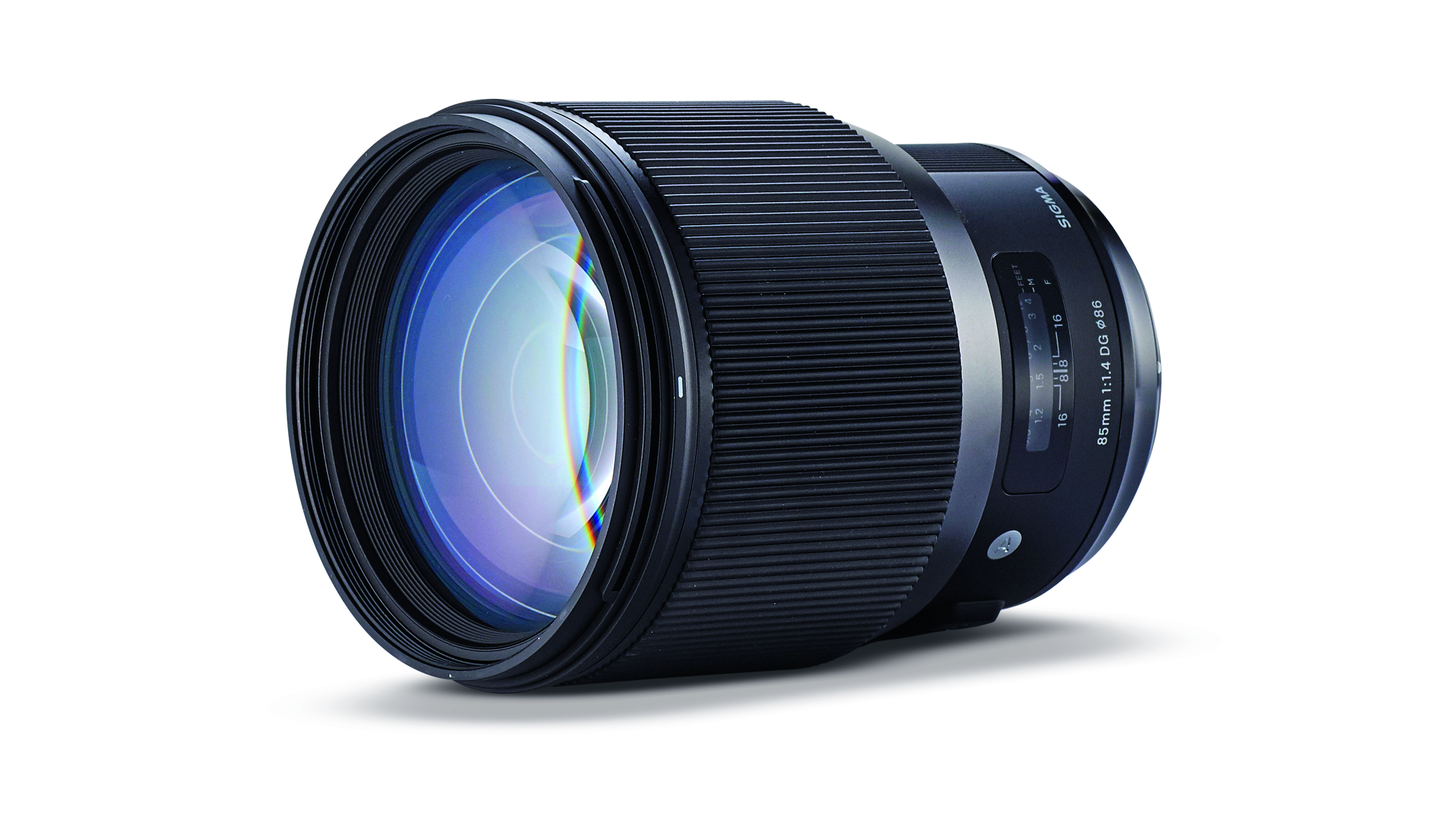
Specifications
Reasons to buy
Reasons to avoid
A supersized 85mm optic, this Sigma is a bit like the Incredible Hulk of portrait lenses. At 95x126mm and 1130g, it’s one of the biggest lenses on this list.
Uncommonly for a Sigma lens, everything’s wrapped up in a weather-resistant dust/splash-proof casing, and, as with the 50mm Art lens also featured, it’s compatible with Sigma’s USB Dock for applying firmware updates and customizing settings. Also like the Sigma 50mm lens, this one comes complete with a lens hood and padded soft case.
Autofocus is fast, extremely quiet, and unerringly accurate. Sharpness away from the center of the image frame is outstanding, even when shooting wide open at f/1.4, although center sharpness at the widest aperture isn’t quite as spectacular as from Sigma’s smaller 50mm Art lens.
All in all, this lens delivers a superb performance, but it’s pricey and rather cumbersome for an 85mm prime lens.
See our Sigma 85mm f/1.4 DG HSM Art review
Best macro portrait lens
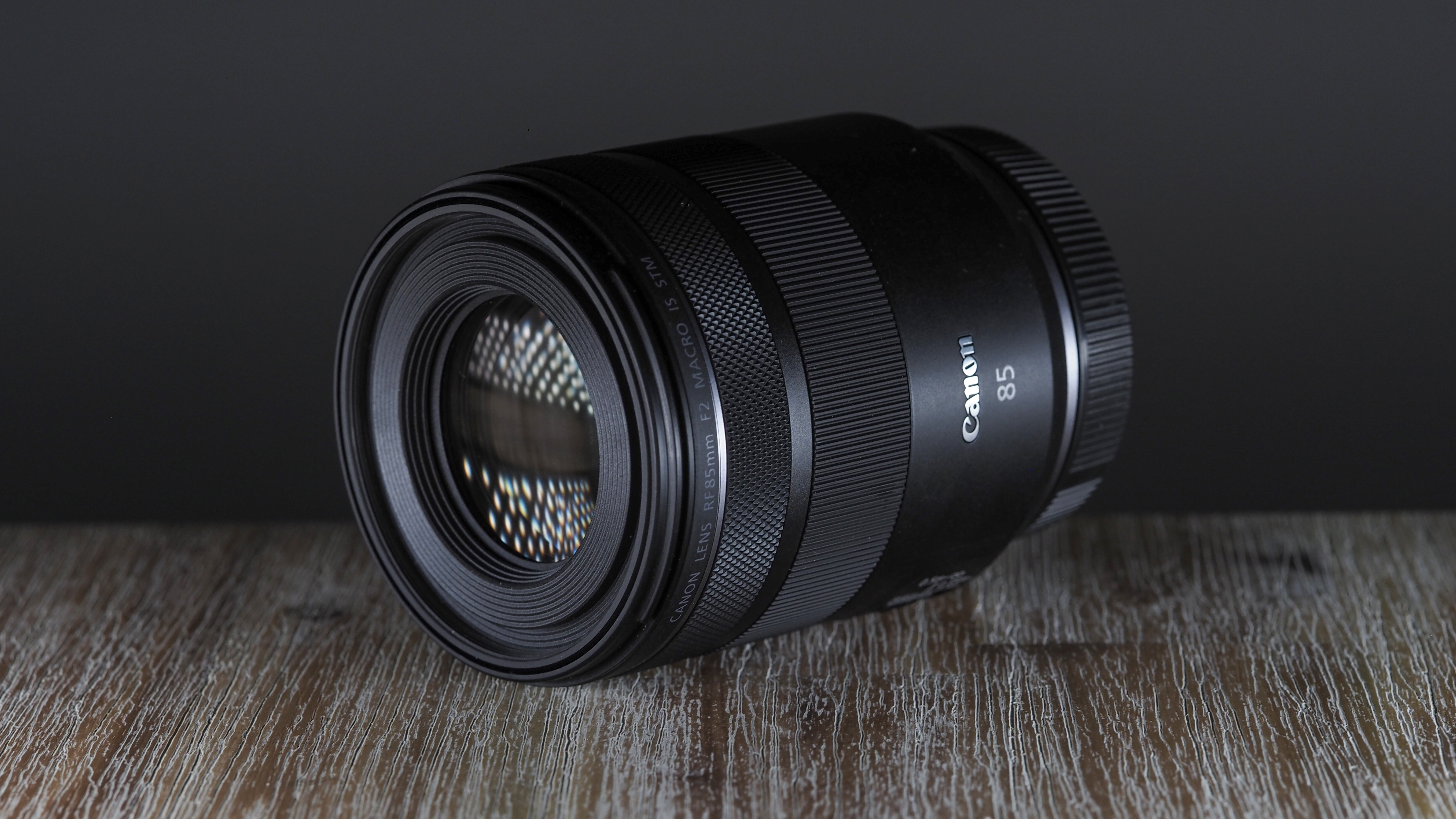
Specifications
Reasons to buy
Reasons to avoid
There's no getting away from the fact that Canon's RF 85mm f/1.2L USM in our number-one spot is an expensive lens. So, if you're looking for a more affordable option, the RF 85mm f/2 Macro is the way to go – especially since it does double duty as a light macro lens, with a 1:2 reproduction ratio, making it a great option for both kinds of close-ups.
While the maximum aperture of f/2 might not be the fastest, I still found this lens to be very capable of delivering really pleasing defocused backgrounds – and it's also incredibly sharp. If your budget won't stretch to the 85mm f/1.2, or you simply want something that isn't bigger and heavier than the camera you're mounting it on, you certainly won't be disappointed with this lens.
Read our full Canon RF 85mm f/2 Macro IS STM review
Best used portrait lens
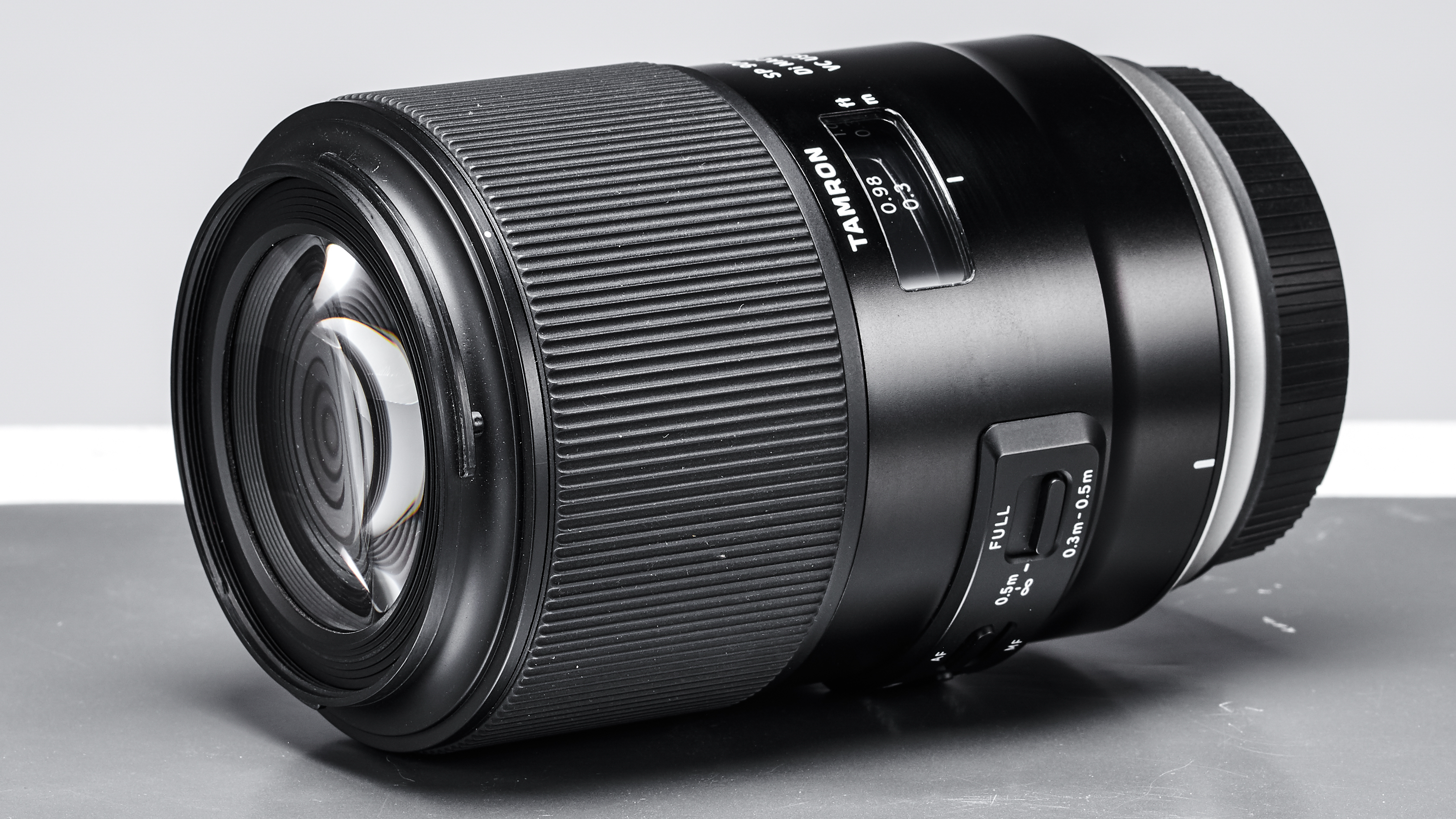
Specifications
Reasons to buy
Reasons to avoid
One of many macro lenses that doubles up as a solid portrait lens, the Tamron SP 90mm f/2.8 Di VC USD Macro is something of a bargain. Its 90mm focal length is right in the sweet spot for portraits, and you also get a handy built-in stabilizer to keep shots sharp. On that subject, in our review, we were hugely impressed with the sharpness of the Tamron SP 90mm, especially in the center (where you’re going to be putting your portrait subjects). It performed very well in our optical tests, and as a bonus for portrait shooters, the quality of bokeh in defocused areas is highly pleasing.
This lens isn’t too widely available these days, but it’s worth scouting around for it on the second-hand market. Our advice if you’re interested is not to wait – the prices for used lenses can and do creep back up when they get popular. Another thing worth noting is that the lens might need a firmware update before it can work with Canon EF-EOS R mount adapters.
Best fast-focusing portrait lens
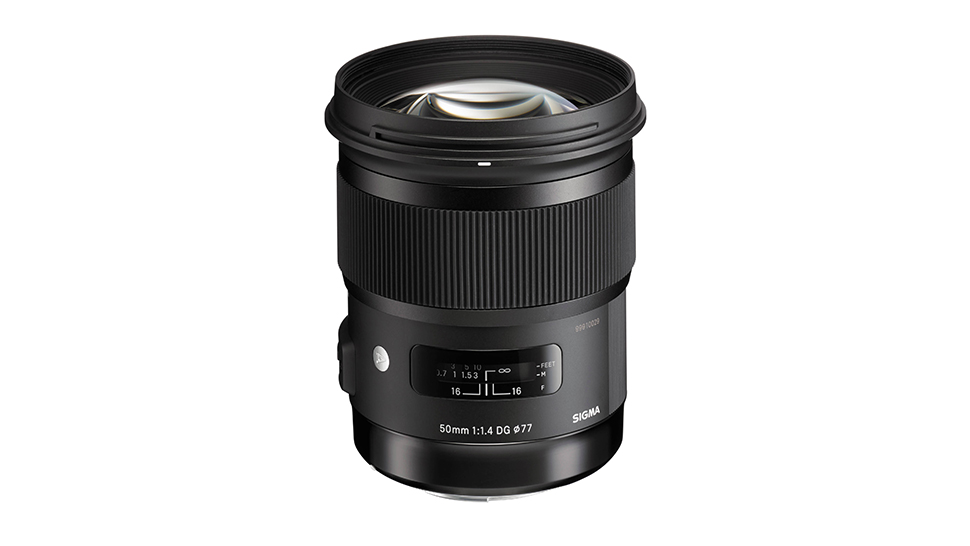
Specifications
Reasons to buy
Reasons to avoid
You certainly can’t accuse Sigma’s 50mm Art-line lens of being a lightweight contender, being physically twice as long and nearly three times heavier than the Canon EF 50mm f/1.4 USM.
The reason for the upsizing and weight gain is that the Sigma has a much more complex design than the EF 50mm f/1.4 USM, with 13 optical glass elements and a well-rounded aperture, thanks to its nine diaphragm blades. Another Sigma upgrade is that it features a fast and whisper-quiet, ring-type ultrasonic autofocus system, whereas the EF 50mm f/1.4 USM only has a motor-driven ultrasonic arrangement.
At its widest aperture, this optic has better centre sharpness than any other lens in this group, along with superb contrast. Corner sharpness is comparatively disappointing, although it picks up well if you close down the aperture by a stop or two. Colour fringing is also very well contained and distortion is practically nonexistent. Put simply, all-round performance is exceptional.
See our full Sigma 50mm f/1.4 DG HSM Art review
Best cheap RF portrait lens
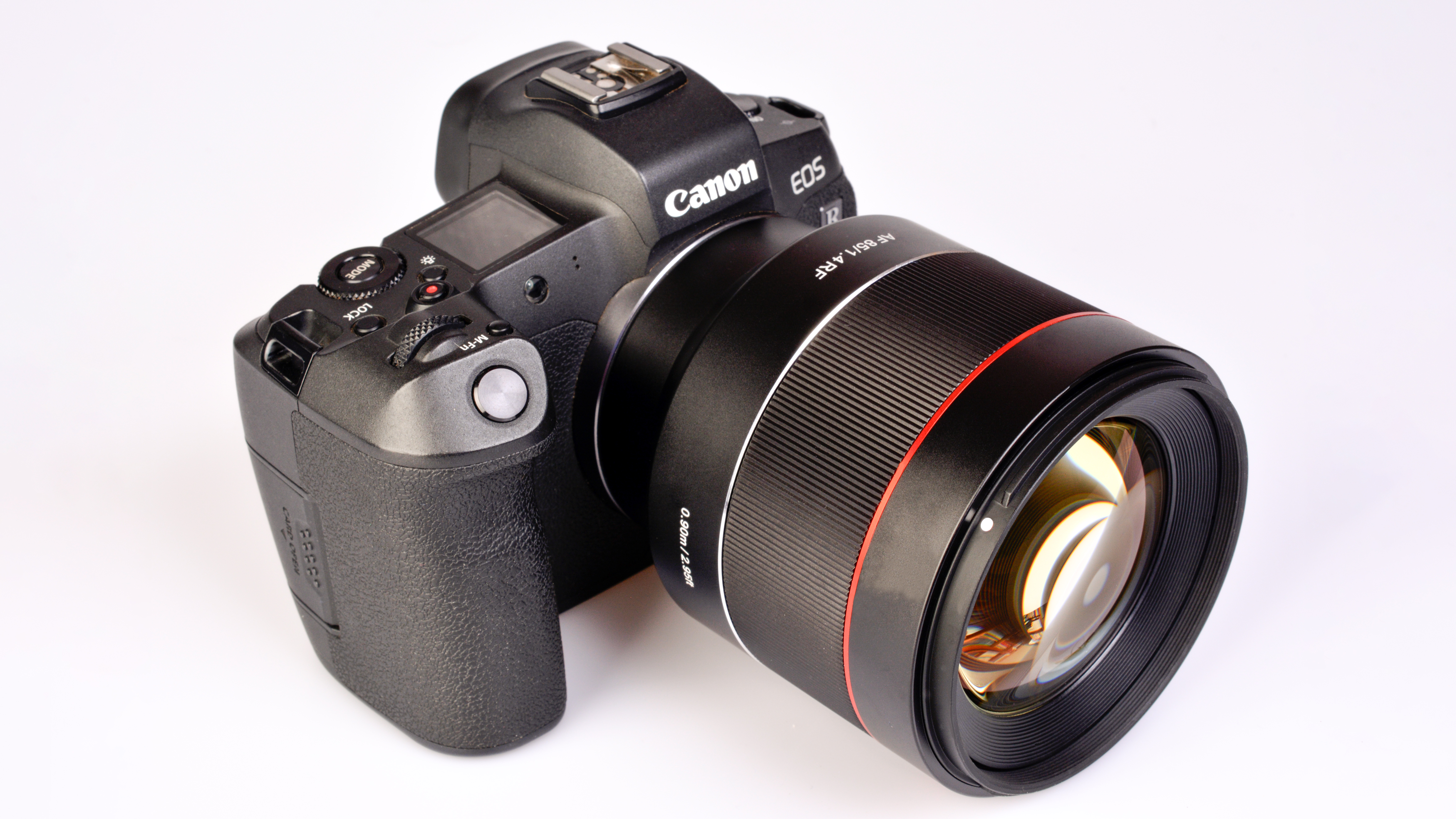
Specifications
Reasons to buy
Reasons to avoid
There are relatively few dedicated portrait lenses for the RF mount, and Canon's own are pretty expensive. That's why it's nice to see the release of the Samyang AF 85mm f/1.4 RF, an impressively high-quality lens that's significantly cheaper than any of Canon's native offerings. This newer version brings autofocus to the party (the Samyang MF 85mm f/1.4 RF is also available if you can cope with manual focus only), and acquits itself well across the board.
Image sharpness isn't quite at the level of Canon's own RF lenses, but is still pretty darn good. There's no stored lens correction data, meaning the camera can't apply corrections automatically like it can with native RF lenses, but this is a small concern, and might well be fixed in a future update. This high-quality lens offers tremendous value for money, and for portraits, it does everything you need it to.
See our full Samyang AF 85mm f/1.4 RF review
Best lightweight EF-M portrait lens
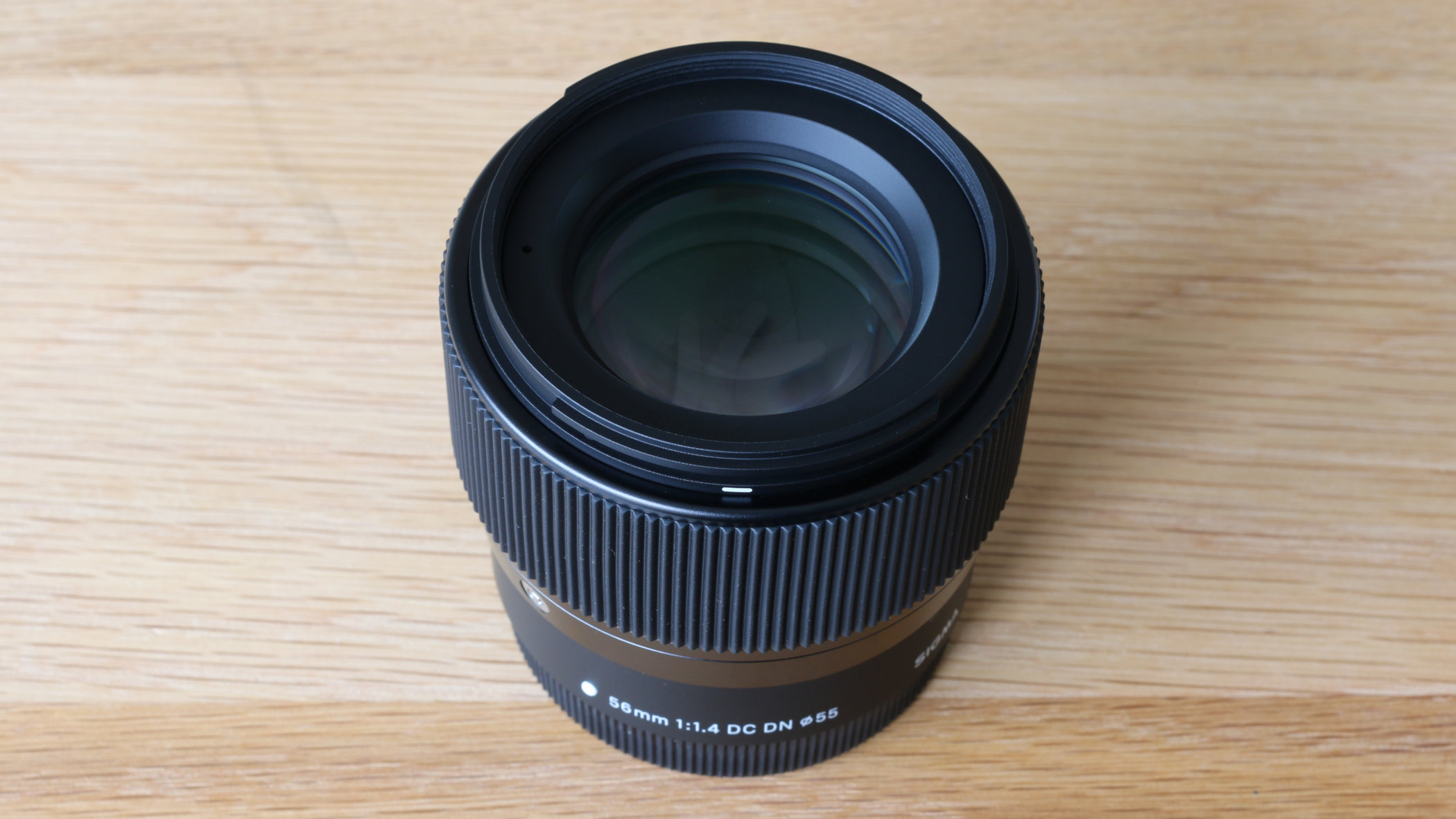
Specifications
Reasons to buy
Reasons to avoid
Portrait lenses with a telephoto focal length and f/1.4 aperture tend to be big and heavy. By stark contrast, this Sigma prime is blissfully compact and tips the scales at just 280g. It’s supremely well balanced on lightweight EOS M bodies, on which it has a very portrait-friendly 90mm ‘effective’ focal length. Although small and light, it’s well built with a metal mounting plate and Sigma’s usual ‘Thermally Stable Composite’ material.
The high-quality optical path includes two aspherical elements, one of which is made from SLD (Special Low Dispersion) glass. Autofocus is fast and very accurate, based on a stepping motor, along with an electronically coupled manual focus ring. The net result is a compact lens that combines excellent sharpness with beautifully smooth bokeh, ideal for portraiture.
See our full Sigma 56mm f/1.4 DC DN | C review
How to choose the best Canon portrait lenses
You can make a striking, interesting and dynamic portrait with basically any lens, so we're not going to give you hard-and-fast rules here. However, as you've probably already noticed if you've scanned through this guide, there are a number of lens qualities that portrait shooters tend to favour.
The first is a short telephoto focal length. While specifics vary, 85mm is generally considered the sweet spot, with 70mm to around 110mm also being favoured. There are two key reasons for this: first, a longer focal length provides a compressed perspective that results in more flatter rendition of facial features. Second, the separation between subject and background is stronger, allowing for the characteristic sharp subject / blurred background combination that is characteristic of a good portrait.
With that said, some shooters prefer using slightly shorter focal lengths like 50mm to create more environmental portraits that place a subject in context. Also, remember that if you're using a camera with an APS-C sensor (an EF-S, RF-S or EF-M model) then you'll need to apply a 1.6x crop factor to the stated focal length to work out what the lens will actually deliver. So, a 50mm lens mounted to an APS-C Canon DSLR will produce an effective focal length of 80mm.
The other key factor is a nice and wide maximum aperture, allowing you to create a shallow depth of field to further accentuate that difference between sharp subject and blurred background. In general, you want at least f/2 to work with, though f/1.8 is better, and f/1.4 is better still. The ultra-professional portrait lenses will generally go to f/1.2, though this isn't strictly necessarily, and will be beyond most people's budgets.
How we test the best Canon portrait lenses
We test lenses using both real-world sample images and lab tests. Our lab tests are carried out scientifically in controlled conditions using the Imatest testing suite, which consists of custom charts and analysis software that measures resolution in line widths/picture height, a measurement widely used in lens and camera testing.
We also test each lens in live shooting environments, often for portfolio or paid client work, to truly put them through their paces. Results removed from the lab are less theoretical, and really reveal the proof in the pudding, especially when used in challenging and uncontrolled environments.
We find the combination of lab and real-word testing works best, as each reveals different qualities and characteristics.
FAQs
What are beginner tips for portrait photography?
Portrait photography is a discipline that's challenging to master, but relatively easy to start – all you need is a camera, a lens and a willing subject. The best way to learn is simply by doing, but for some starter tips, we'd say the most critical things to remember are: focus on the eyes, use a shallow depth of field for a blurred background, and always shoot from above your subject's eye level. For more tips, check out our guide to 8 portrait photography mistakes (and how to avoid them).
Can you use Canon DSLR lenses on mirrorless?
It depends which type of mirrorless camera you have. Canon EF-mount DSLR lenses can easily be adapted to Canon EOS R (RF-mount) cameras using one of Canon's EF-EOS R adapters. Generally, the lenses will fully function with autofocus and stabilization if they have it, just as they would on a DSLR. Note that this process does not work in reverse – you cannot adapt RF-mount lenses to work on EF-mount DSLRs.
There is also not an adapter available for the EOS M series. If you are using one of these cameras, you will need to use EF-M mount lenses, which also cannot be adapted to other mounts.
Which Canon camera is best for portraits?
Lens choice tends to be a lot more important than camera choice when it comes to portraiture, as you're unlikely to need super-fast burst rates, top-notch low-light performance or other such features. If you're planning on printing your portraits, it's worth ensuring you get a camera that offers enough resolution to make this practicable (though they basically all do nowadays). Also, a larger full-frame sensor can be helpful in creating images with a shallow depth of field, though this is by no means essential. Take a look at our guide to the best Canon cameras to get an idea of what's out there currently.
You might also be interested in the best portrait lenses across all camera brands, as well as the best 50mm lenses and the best Canon standard zoom lenses.
Get the Digital Camera World Newsletter
The best camera deals, reviews, product advice, and unmissable photography news, direct to your inbox!
Matthew Richards is a photographer and journalist who has spent years using and reviewing all manner of photo gear. He is Digital Camera World's principal lens reviewer – and has tested more primes and zooms than most people have had hot dinners!
His expertise with equipment doesn’t end there, though. He is also an encyclopedia when it comes to all manner of cameras, camera holsters and bags, flashguns, tripods and heads, printers, papers and inks, and just about anything imaging-related.
In an earlier life he was a broadcast engineer at the BBC, as well as a former editor of PC Guide.
- James ArtaiusEditor in Chief
